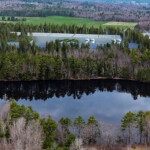Editor’s note: SeaFood Business Associate Publisher and Editor Fiona Robinson is in Santiago, Chile, reporting from this week’s 2011 Global Outlook for Aquaculture Leadership (GOAL) conference.
Doubling farmed seafood production in a decade will require a lot of investment, but those investors need patience when considering financing operations in this sector.
Attendees at this week’s Global Outlook for Aquaculture Leadership (GOAL) conference, held at the Grand Hyatt in Santiago, Chile, on Monday were given a host of production models forecasting how farmed seafood supplies could “Double in a Decade,” the theme of the conference. Meanwhile, Tuesday’s panels revolved around the topic of how paying for that production could happen.
Jeff Fort, president of Delta Blue Aquaculture and a member of the board of directors at conference organizer Global Aquaculture Alliance, opened Tuesday morning’s panels by setting the framework for the conference theme and how it relates to the investment industry.
“Expansion to double in a decade is an enormous undertaking, likely in the billions of dollars,” said Fort. The ripple effects need to be considered with the challenge of increasing aquaculture production, including the lead time necessary to grow species, developing technologies, dealing with weather, biology, commodity markets and branding.
“There is a sense of urgency where the world is asking for more seafood it will require more investment. If we don’t accept this challenge, aquaculture will lose out to other terrestrial proteins. Let’s not lose this opportunity,” added Fort.
One challenge that investment companies need to consider with the aquaculture sector is that it’s an asset-heavy industry related to the length of the species production cycle, said Gorjan Nikolik, senior associate and industry analyst at Rabobank International of the Netherlands. “It’s a young and diverse industry. specific knowledge is necessary to understand the sector,” added Nikolik.
He predicted that mature wild harvest sectors will continue to invest in aquaculture. Leading pelagic and whitefish harvesters are key investors in the aquaculture sector, including Pescanova, Sanford, Pacific Andes and Camanchaca, added Nikolik.
All presenters during the morning’s focus on financing aquaculture growth mentioned that investments in the sector need to be taken with a long-term approach.
“You can’t make an investment [in aquaculture] and within a year or two turn it for a profit. You buy, build and generate value in the long-term,” said Mitchell Presser, a founding partner at Paine & Partners, a U.S. private equity group with investments in the seafood industry.
Drew Tarlow, an associate at Pegasus Capital Advisors in the United States, echoed Presser’s sentiment on patience. “[This industry] won’t have five clear winners and easy innovations. We need to build sustainable businesses with long-term success,” said Tarlow.
There are changes in the aquaculture industry that make it an opportunity for investment, said Presser, including the growing global demand for seafood, better genetics that are improving growth rates and reducing mortality rates and an increased focus on biosecurity and quality control regulations.
Check out Robinson’s two stories from Monday: “Doubling aquaculture production in a decade?” and “World Bank: Opportunity ripe for aquaculture.”





